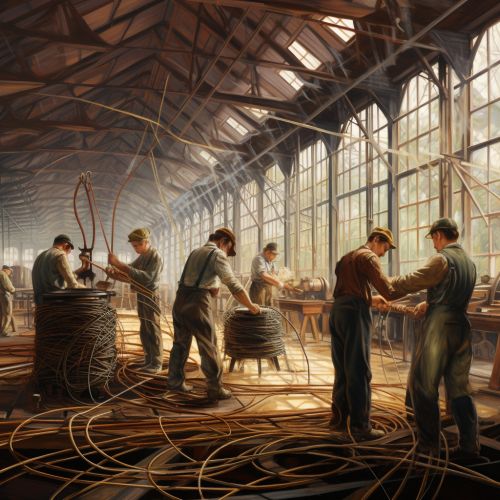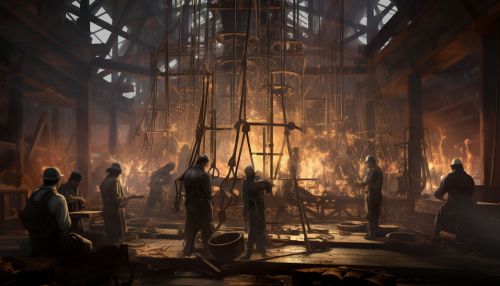John A. Roebling
Early Life
John Augustus Roebling was born on June 12, 1806, in Mühlhausen, Thuringia, Germany. He was the youngest of four children. His father, Christoph Polycarp Roebling, owned a small tobacco shop but was also a civil servant and local surveyor. His mother was Dorothea Mueller Roebling.
Roebling attended the local gymnasium in Mühlhausen, where he showed an early aptitude for mathematics and science. In 1824, he enrolled at the Royal Polytechnic Institute in Berlin, where he studied architecture, bridge construction, and hydraulics. He also developed an interest in natural philosophy and many other subjects, which would later influence his bridge designs.


Immigration to America
After completing his studies in 1826, Roebling worked for the Prussian government for a few years. However, he became disillusioned with the lack of opportunities and the rigid social structure in Prussia. Inspired by the democratic ideals and opportunities offered by the United States, Roebling and his brother Karl decided to immigrate to America in 1831.
Upon arriving in Pennsylvania, the brothers purchased land in Saxonburg and established a farming community. However, Roebling soon realized that farming was not his calling. He moved to Harrisburg, Pennsylvania, where he found work as a civil engineer. He worked on various projects, including canals and roads, and gained valuable experience in the practical aspects of engineering.
Wire Rope Manufacturing
In the 1840s, Roebling began experimenting with wire rope. He was dissatisfied with the hemp ropes used in canal construction, which were prone to breakage and required frequent replacement. Roebling believed that wire ropes would be stronger, more durable, and more cost-effective.
In 1841, Roebling established a wire rope manufacturing business in Saxonburg. His ropes were made of several strands of wire twisted together, which made them stronger and more flexible than single-strand wire. His wire ropes were soon in high demand for canal and railway construction, and the business became very successful.


Suspension Bridge Design
Roebling's experience with wire ropes led him to consider their use in bridge construction. He was particularly interested in suspension bridges, which were a relatively new and innovative type of bridge at the time.
In 1844, Roebling designed and built the Allegheny Aqueduct Bridge in Pittsburgh, Pennsylvania. This was the first bridge to use wire ropes for its suspension cables, and it was a great success. The bridge's innovative design and the strength and durability of its cables demonstrated the potential of wire rope for bridge construction.
Roebling went on to design and build several more suspension bridges, each more ambitious than the last. His most famous bridges include the Niagara Falls Suspension Bridge, the Covington-Cincinnati Suspension Bridge, and the Brooklyn Bridge.
The Brooklyn Bridge
Roebling's crowning achievement was the Brooklyn Bridge, which was completed in 1883. The bridge spans the East River between Manhattan and Brooklyn in New York City. At the time of its completion, it was the longest suspension bridge in the world.
The Brooklyn Bridge was a monumental engineering achievement. It was the first bridge to use steel for its suspension cables, and it incorporated numerous other innovations, such as the use of pneumatic caissons for the bridge's foundations.
Roebling did not live to see the completion of the Brooklyn Bridge. He suffered a fatal injury while surveying the site in 1869, and the project was completed by his son, Washington Roebling, and his daughter-in-law, Emily Warren Roebling.


Legacy
John A. Roebling is remembered as one of the greatest engineers of the 19th century. His innovative designs and use of new materials revolutionized bridge construction. His bridges, particularly the Brooklyn Bridge, are considered iconic landmarks and are still in use today.
Roebling's wire rope manufacturing business also had a lasting impact. The company he founded, John A. Roebling's Sons Company, continued to manufacture wire rope for many years. The company played a significant role in the industrial development of the United States, supplying wire rope for numerous construction projects and for the elevator cables used in many of the country's early skyscrapers.
